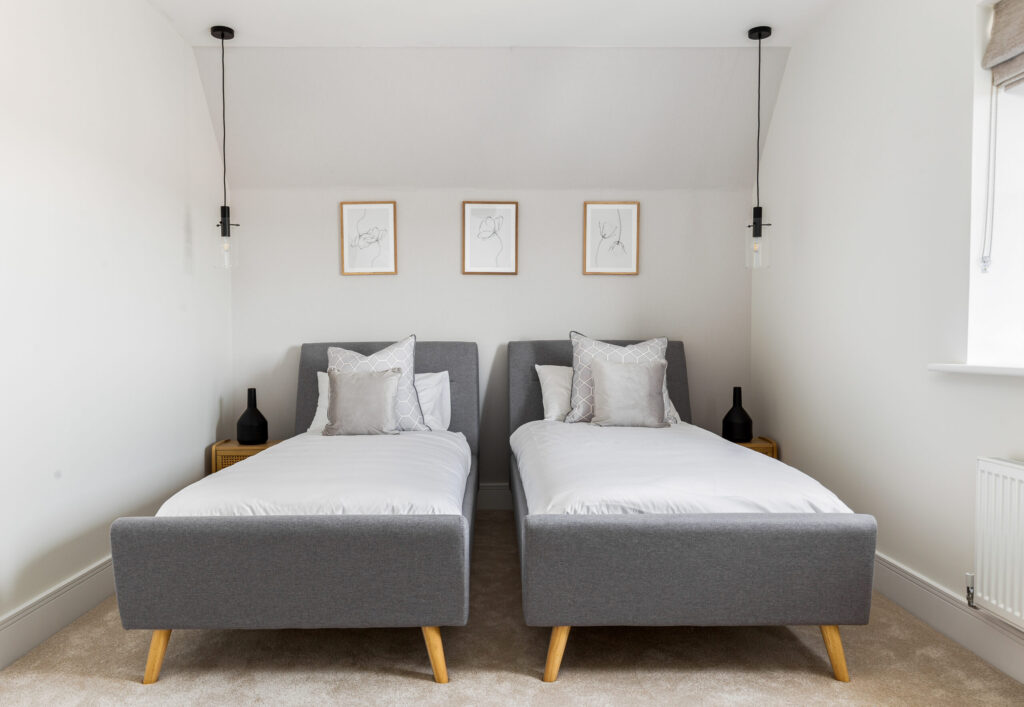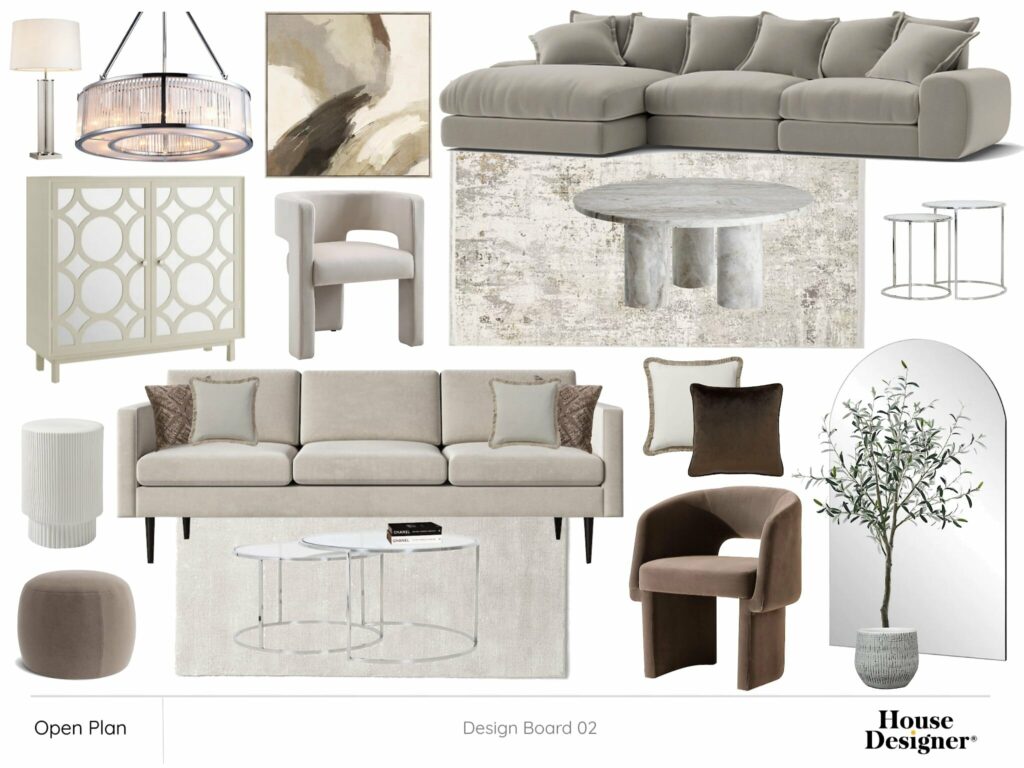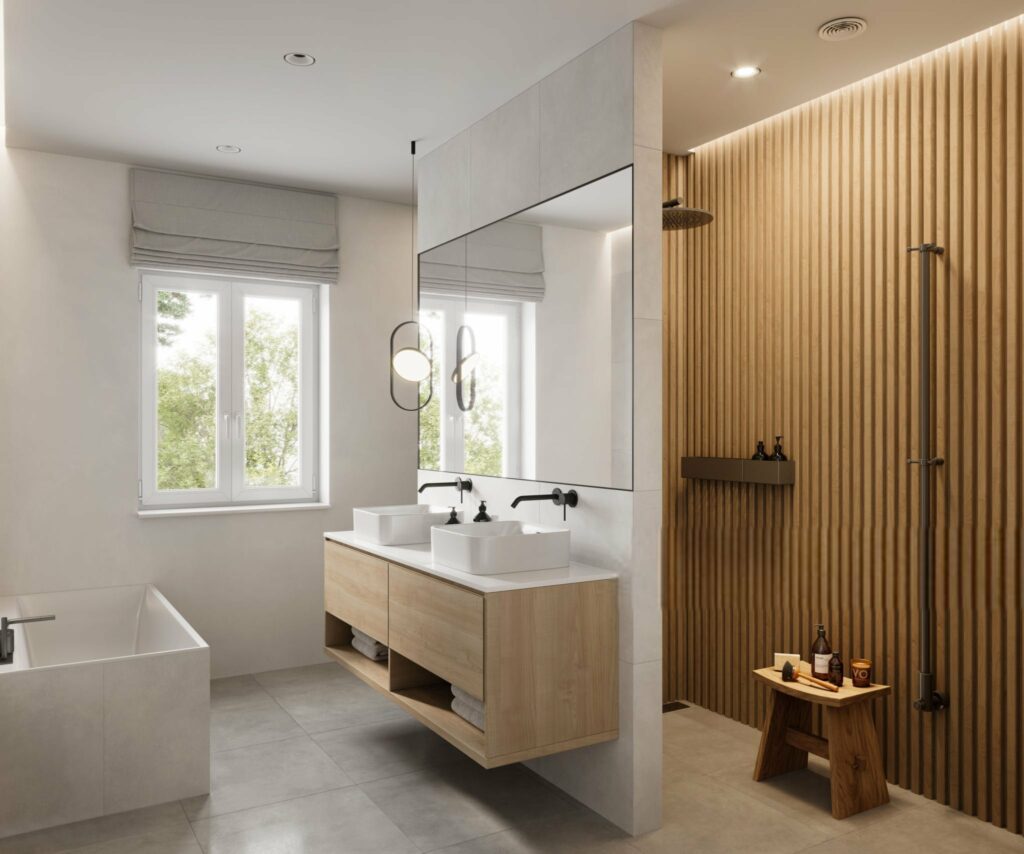The concept of minimalism in interior design has gained significant popularity. Minimalism, characterised by simplicity, functionality, and a focus on essential elements, offers more than just an aesthetic choice; it represents a way of life. Let’s delve into the power of minimalism in interior design and how it can transform living spaces.
Less is More
The core principle of minimalism can be summed up in the famous phrase “less is more.” It’s about decluttering, eliminating excess, and embracing the idea that a simplified environment leads to increased clarity and focus. In interior design, this translates to clean lines, uncluttered spaces, and a restrained colour palette.
A minimalist interior design palette often consists of neutral tones, such as white, black, gray, and beige. These colours create a sense of calm and tranquility, allowing the mind to rest and the eye to appreciate the space without distractions.
Functionality and Purpose

image credit: House Designer
Minimalist interiors focus on functionality and purpose. Importantly, every piece of furniture or decor serves a specific function, eliminating purely decorative items. This practical approach is also environmentally conscious, reducing waste and promoting sustainable materials.
For instance, in a minimalist living room, you might find a sleek sofa with hidden storage. Consequently, this eliminates the need for extra items like side tables or storage units. As a result, the space feels open, inviting, and remarkably efficient.
Quality Over Quantity

image credit: House Designer
Minimalism places a premium on the quality of items over their quantity. Instead of filling a room with numerous pieces of furniture or decor, a minimalist interior might feature a few carefully selected, high-quality items. This approach not only elevates the aesthetic but also promotes longevity and sustainability.
Investing in timeless and well-crafted furniture pieces means they will last for years, reducing the need for constant replacements and contributing to a more sustainable lifestyle.
Embracing Negative Space

image credit: House Designer
One of the most distinctive aspects of minimalist interior design is the generous use of negative space. Negative space is the empty or unoccupied area within a room, and it plays a crucial role in creating a sense of balance and harmony. In a minimalist interior, negative space is not something to be filled but rather celebrated.
By leaving areas of a room open and uncluttered, minimalist design encourages mindfulness and contemplation. It allows individuals to appreciate the beauty of simplicity and the importance of space itself as an element of design.
A Calming Influence

image credit: House Designer
Minimalist interiors have a profound impact on our mental well-being. They provide a sanctuary from the chaos of the outside world and offer a sense of serenity and calm. The absence of visual clutter and excess stimuli allows the mind to relax and recharge.
Walking into a minimalist space can be like taking a deep breath—a moment of respite in a fast-paced world. It’s a reminder that simplicity can be a source of beauty and that living with intentionality can lead to a more fulfilling life.
Conclusion
The minimalism in interior design transcends mere appearance. It’s a philosophy impacting our lifestyle, emphasising simplicity, functionality, and quality. This approach fosters well-being, sustainability, and mindfulness.
Contrasting with today’s excess, minimalism values “less is more,” focusing on essential elements. It encourages decluttering spaces and minds, highlighting simplicity’s beauty



